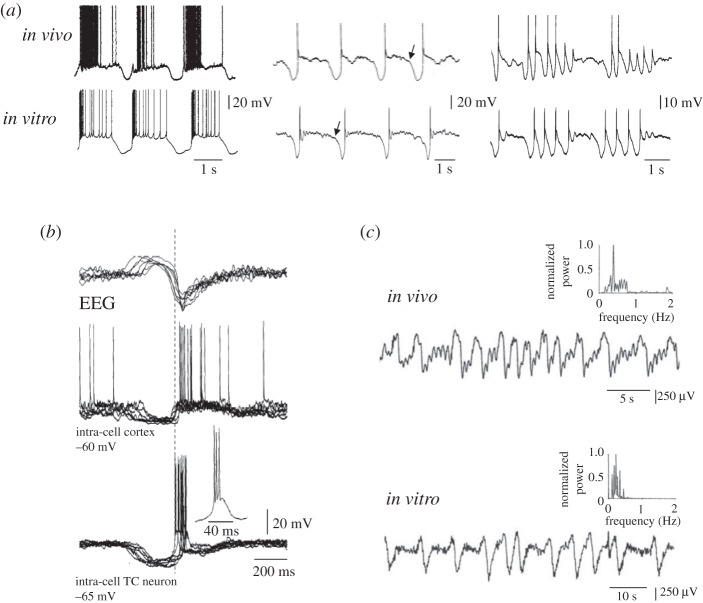Figure 2.
Similarity of the slow oscillation in vitro and in vivo and leading role of thalamic firing in the generation of a new UP state. (a) Examples of the slow oscillation recorded in vitro and in vivo in TC neurons. Note the strong similarities in the waveform of the slow oscillation recorded in the two experimental conditions. Traces in vitro were obtained in the presence of 100 μM t-ACPD. (b) Simultaneous EEG and intracellular recordings from a cortical and a TC neuron in vivo show the LTCP-mediated bursts of action potentials in the TC neurons to precede the UP state of the cortical cell. (c) Local field potentials recorded from the lateral geniculate nucleus in vivo during natural deep NREM sleep (top) and in a thalamic slice in the presence of t-ACPD (50 μM). Both traces show a characteristic slow rhythm at <1 Hz. The presence of this rhythm in a thalamic slice indicates that mechanisms exist within the thalamus to elicit a synchronized (<1 Hz) output even in the absence of a cortical input. Adapted with permission from Crunelli & Hughes [2].

